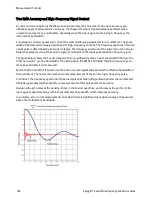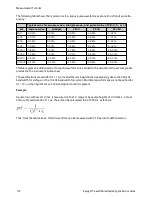
DC Measurement Considerations
Thermal EMF Errors
Thermoelectric voltages are the most common error source in low–level DC voltage measurements. Ther-
moelectric voltages are generated by circuit connections using dissimilar metals at different temperatures.
Each metal–to–metal junction forms a thermocouple that generates a voltage proportional to the junc-
tion temperature, as shown in the table below. You should minimize thermocouple voltages and tem-
perature variations in low–level voltage measurements. The best connections use copper–to–copper
crimped connections, as the DMM’s input terminals are a copper alloy.
Copper to:
Approx. µV / °C
Cadmium-Tin Solder 0.2
Copper
<0.3
Gold
0.5
Silver
0.5
Brass
3
Beryllium Copper
5
Aluminum
5
Tin-Lead Solder
5
Kovar or Alloy 42
40
Silicon
500
Copper Oxide
1000
Loading Errors (DC Voltage)
Measurement loading errors occur when the resistance of the DUT is an appreciable percentage of the mul-
timeter's input resistance, as shown below.
To reduce the effects of loading errors and to minimize noise pickup, set the multimeter's input resistance
to >10 GΩ (high-impedance) for the 100 mVDC, 1 VDC, and 10 VDC ranges. The input resistance is main-
tained at 10 MΩ for the 100 VDC and 1000 VDC ranges.
Measurement Tutorial
162
Keysight True
volt
Series Operating and Service Guide
















































